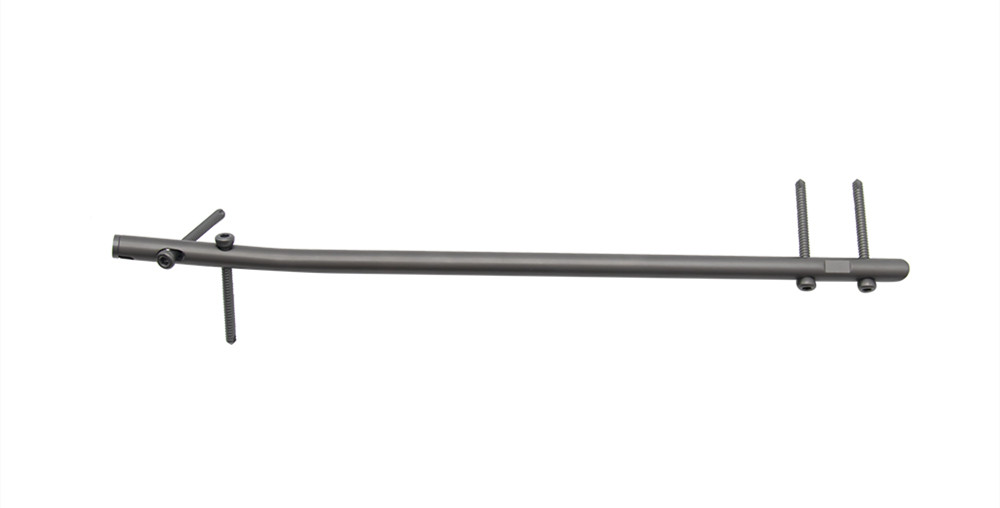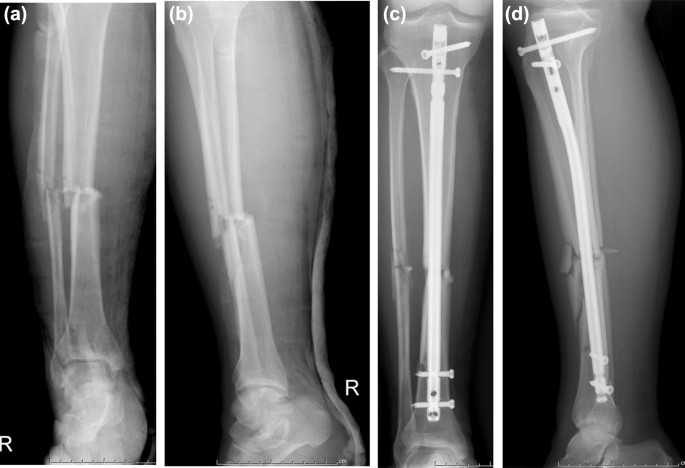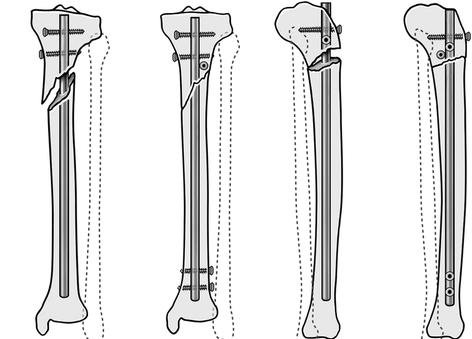Tibial fractures, affecting the shinbone, can significantly impact mobility and daily activities. The treatment of these fractures requires careful consideration of various factors, including fracture type, location, and patient characteristics. One surgical option that has proven effective in recent years is the use of a tibial intramedullary nail. This article explores the benefits, surgical technique, risks, and recovery associated with this treatment approach.
Introduction
Fractures of the tibia can be debilitating, causing pain, instability, and difficulty in walking. Traditional treatment methods, such as casting or external fixation, have limitations, prompting the exploration of more advanced solutions like the tibial intramedullary nail.

What is a Tibial Intramedullary Nail?
A tibial intramedullary nail is a medical device designed to stabilize and promote the healing of fractures in the tibial shaft. It consists of a metal rod inserted into the hollow center of the bone, providing stability and support during the healing process. The nail is typically made of titanium or stainless steel and comes in various sizes to accommodate different patient anatomies.
Indications for Tibial Intramedullary Nail
Tibial intramedullary nails are commonly used for the treatment of tibial shaft fractures. They are particularly effective for fractures that require stable fixation, such as displaced or comminuted fractures. This technique is also suitable for cases with poor bone quality or when immediate weight-bearing is desired.
Surgical Technique for Tibial Intramedullary Nail

Preoperative Planning
Thorough preoperative planning is crucial for successful tibial intramedullary nail surgery. This includes a comprehensive evaluation of the fracture pattern, patient's general health, and any associated injuries. Imaging techniques such as X-rays, CT scans, or MRI may be used to assess the fracture characteristics and guide surgical decision-making.
Patient Positioning
During the surgery, the patient is typically positioned supine on the operating table. The affected leg is prepped and draped in a sterile manner. Proper positioning is essential to allow optimal access to the fracture site and facilitate nail insertion.
Incision and Access
An incision is made over the surgical site to access the fractured bone. The length and location of the incision depend on the fracture type and its location along the tibia. Careful soft tissue handling is crucial to minimize trauma and reduce the risk of infection.
Nail Insertion
After creating an entry point in the proximal tibia, the surgeon carefully inserts the tibial intramedullary nail into the medullary canal. Fluoroscopic guidance is used to ensure accurate placement and alignment. The nail is advanced through the bone, realigning any displaced fragments and restoring proper anatomical alignment.
Locking Screws Placement
Once the nail is correctly positioned, locking screws are inserted to secure the nail within the bone. These screws provide additional stability and prevent rotational or axial movements of the fracture fragments. The number and placement of screws depend on the fracture pattern and the surgeon's preference.
Wound Closure
After ensuring proper alignment and fixation, the incision is closed using sutures or staples. Wound closure is done meticulously to promote healing and minimize the risk of infection. A sterile dressing is applied, and the surgical site is protected.

Advantages of Tibial Intramedullary Nail
The use of a tibial intramedullary nail offers several advantages over traditional treatment methods. Some of the key benefits include:
Stable fixation: The nail provides stable fixation, allowing for proper alignment and union of the fracture fragments.
Early mobilization: The nail provides early mobilization, enabling patients to begin weight-bearing and rehabilitation exercises sooner compared to other treatment methods.
Preservation of blood supply: By utilizing the intramedullary canal, the tibial intramedullary nail technique minimizes disruption to the blood supply of the bone, which is crucial for fracture healing.
Improved functional outcomes: With stable fixation and early mobilization, patients undergoing tibial intramedullary nail surgery often experience improved functional outcomes and quicker return to daily activities.
Reduced risk of soft tissue complications: Compared to external fixation methods, the intramedullary nail technique involves smaller incisions and reduced soft tissue disruption, resulting in a lower risk of soft tissue complications and infections.
Complications and Risks
While tibial intramedullary nail surgery is generally safe and effective, there are potential complications and risks associated with the procedure. It's important to be aware of these possibilities before undergoing treatment. Some of the complications include:
Infection
As with any surgical procedure, there is a risk of infection. However, with proper sterile techniques, antibiotic prophylaxis, and postoperative care, the risk of infection can be minimized.
Malalignment or Nonunion
In some cases, the fracture fragments may not heal in the desired alignment or fail to heal altogether. Factors such as inadequate reduction, poor bone quality, or excessive weight-bearing can contribute to malalignment or nonunion. Close monitoring and, if necessary, additional interventions such as revision surgery may be required.
Implant-related Complications
While uncommon, implant-related complications can occur, such as implant loosening, breakage, or irritation. These issues may require further surgical intervention to address.
Nerve or Blood Vessel Injury
During the surgical procedure, there is a small risk of nerve or blood vessel injury. Surgeons take precautions to minimize this risk, but patients should be aware of the possibility and promptly report any persistent or worsening symptoms.
Rehabilitation and Recovery
Following tibial intramedullary nail surgery, a comprehensive rehabilitation program is crucial for optimal recovery. The specific rehabilitation plan may vary depending on the fracture severity, patient characteristics, and surgeon's guidance. Early motion exercises, gradual weight-bearing, and physical therapy play important roles in restoring function, improving strength, and promoting bone healing.
Case Studies and Success Stories
Numerous patients have experienced successful outcomes with tibial intramedullary nail surgery. One case study involved a 35-year-old individual with a comminuted tibial shaft fracture. After undergoing surgery with a tibial intramedullary nail, the patient achieved solid fracture union, regained full weight-bearing capacity, and returned to their previous level of activity within six months.
Comparison with Other Treatment Options
When considering treatment options for tibial fractures, it's important to compare the benefits and limitations of each approach. While tibial intramedullary nail surgery offers several advantages, such as stable fixation, early mobilization, and reduced soft tissue complications, it may not be suitable for every fracture pattern or patient. Alternative methods, such as plating or external fixation, may be preferred in certain cases. Consulting with an orthopedic specialist will help determine the most appropriate treatment approach based on individual circumstances.
Conclusion
In conclusion, tibial intramedullary nail surgery is a reliable and effective treatment option for tibial fractures. The technique provides stable fixation, allows for early mobilization, and offers several advantages over traditional methods. While there are potential risks and complications associated with the procedure, careful preoperative planning, precise surgical technique, and appropriate postoperative care can minimize these concerns.
English
Français
Русский
Español
العربية
Português
Deutsch
italiano
日本語
한국어
Nederlands
Tiếng Việt
ไทย
Polski
Türkçe
አማርኛ
ພາສາລາວ
ភាសាខ្មែរ
Bahasa Melayu
ဗမာစာ
தமிழ்
Filipino
Bahasa Indonesia
magyar
Română
Čeština
Монгол
қазақ
Српски
हिन्दी
فارسی
Kiswahili
Slovenčina
Slovenščina
Norsk
Svenska
українська
Ελληνικά
Suomi
Հայերեն
עברית
Latine
Dansk
اردو
Shqip
বাংলা
Hrvatski
Afrikaans
Gaeilge
Eesti keel
Māori
नेपाली
Oʻzbekcha
latviešu
অসমীয়া
Aymara
Azərbaycan dili
Bamanankan
Euskara
Беларуская мова
भोजपुरी
Bosanski
Български
Català
Cebuano
Corsu
ދިވެހި
डोग्रिड ने दी
Esperanto
Eʋegbe
Frysk
Galego
ქართული
guarani
ગુજરાતી
Kreyòl ayisyen
Hausa
ʻŌlelo Hawaiʻi
Hmoob
íslenska
Igbo
Ilocano
Basa Jawa
ಕನ್ನಡ
Kinyarwanda
गोंगेन हें नांव
Krio we dɛn kɔl Krio
Kurdî
Kurdî
Кыргызча
Lingala
Lietuvių
Oluganda
Lëtzebuergesch
Македонски
मैथिली
Malagasy
മലയാളം
Malti
मराठी
ꯃꯦꯇꯥꯏ (ꯃꯅꯤꯄꯨꯔꯤ) ꯴.
Mizo tawng
Chichewa
ଓଡ଼ିଆ
Afaan Oromoo
پښتو
ਪੰਜਾਬੀ
Runasimi
Gagana Samoa
संस्कृत
Gaelo Albannach
Sepeti
Sesotho
chiShona
سنڌي
Soomaali
Basa Sunda
Wikang Tagalog
Тоҷикӣ
Татарча
తెలుగు
ትግንያውያን
Xitsonga
Türkmençe
संस्कृत
ئۇيغۇرچە
Cymraeg
isiXhosa
ייִדיש
Yorùbá
isiZulu













